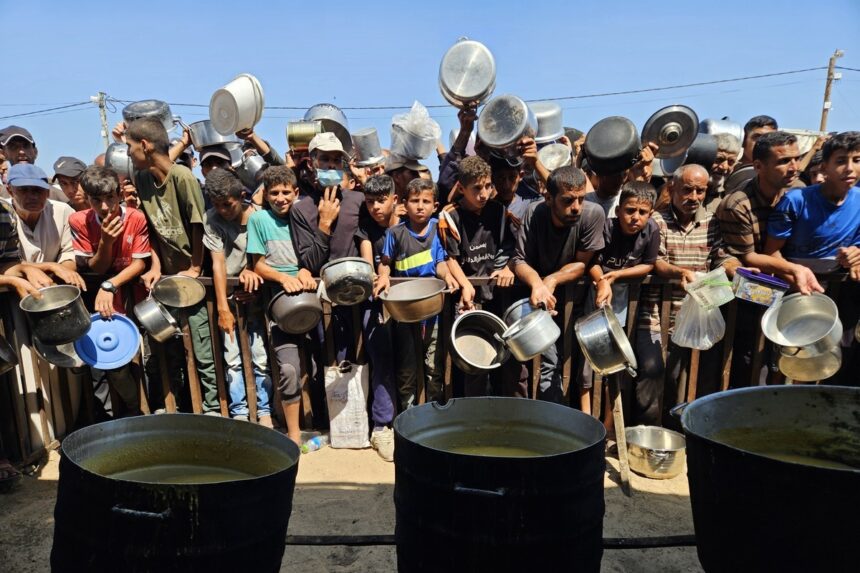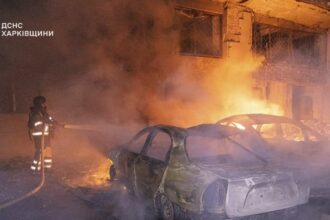In the narrow alleyways of Rafah, 8-year-old Layla clutches an empty container that once held rice, now serving as her most prized possession. “I haven’t eaten real food in three days,” she whispers, her voice barely audible above the distant sounds of bombardment. This heartbreaking scene has become tragically commonplace across Gaza, where the United Nations has declared a full-scale famine is now underway in the northern regions, with catastrophic food insecurity spreading throughout the territory.
The humanitarian crisis in Gaza has reached unprecedented levels in 2024, with aid organizations reporting that over 96% of the population faces acute food insecurity. The World Food Programme’s latest assessment indicates that average caloric intake has plummeted to less than 500 calories per day for most residents—a quarter of recommended daily requirements. This represents the most severe food crisis documented in the region’s modern history.
“What we’re witnessing in Gaza defies description,” explains Dr. Mohammed Al-Masri, one of the few remaining physicians at Al-Awda Hospital in northern Gaza. “We’re treating children with severe protein deficiencies and adults who have lost more than 30% of their body weight. The medical complications from prolonged malnutrition will affect an entire generation.”
The blockade of humanitarian corridors has exacerbated the crisis exponentially. According to CO24 World reporting from border crossings, only 17% of planned aid convoys successfully entered Gaza in June 2024, down from an already insufficient 34% in March. International Relief Committee spokesperson Sarah Henderson described the situation as “a humanitarian system that has completely collapsed.”
Internal displacement has further complicated food distribution efforts. The UN Office for the Coordination of Humanitarian Affairs estimates that 1.9 million people—approximately 85% of Gaza’s population—have been displaced, many multiple times. Overcrowded shelters designed for hundreds now house thousands, with food distribution points overwhelmed by desperate crowds.
“We’ve documented cases where people are consuming inedible substances out of desperation,” reports Médecins Sans Frontières field coordinator Jean Bertrand. “Families are boiling leaves, grinding animal feed into paste, and resorting to drinking contaminated water. The psychological trauma of hunger compounds the physical suffering.”
Economic analysis from the World Bank estimates Gaza’s economic output has contracted by over 80% since October 2023. A devastating report published in CO24 Business last month revealed that food prices in Gaza, when items are available at all, have increased by 500-700% compared to pre-conflict levels. A single kilogram of flour—when available—now costs the equivalent of three days’ pre-war wages.
Canadian Foreign Affairs Minister recently issued a statement urging “immediate and unimpeded humanitarian access” to Gaza, joining mounting international pressure for a humanitarian ceasefire. The statement, covered extensively by CO24 Politics, emphasized Canada’s commitment to increasing humanitarian assistance, though critics argue diplomatic pressure has proven insufficient.
UNICEF Director Catherine Russell has warned that without immediate intervention, “an entire generation of children in Gaza faces irreversible developmental damage from severe malnutrition.” Studies of previous famines indicate that children who survive severe malnutrition often experience lifelong cognitive impairments and heightened susceptibility to disease.
The crisis raises profound questions about international humanitarian law and the responsibilities of occupying powers to ensure civilian access to essential supplies. While political solutions remain elusive, the immediate humanitarian imperative is clear: massive, sustained, and unimpeded aid delivery is required to prevent further loss of life.
As darkness falls over Gaza tonight, millions will go to bed hungry again. What responsibility do we bear as a global community when preventable famine unfolds before our eyes, documented in real-time yet seemingly unstoppable?


















